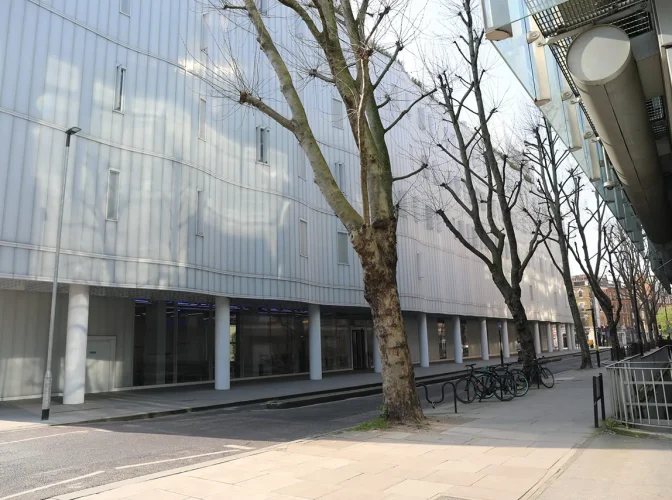
Developing the Centre
Impressive progress has been made in cognitive neuroscience over the last 20 years, yet there is much we still do not know about the organisation and function of the brain. That’s why we developed a world-class neuroscience research and education institute which can host a diverse group of scientists with a common interest in the workings of the brain.
The Sainsbury Wellcome Centre for Neural Circuits and Behaviour (SWC) at University College London (UCL) was formally opened in 2016, with Professor Thomas Mrsic-Flogel appointed as the Director in the same year. We hope to achieve significant progress towards a new goal of understanding exactly how the brain’s neural circuits carry out the information processing that directly underlies behaviour.
A home for Neuroscience Research
Following an ambitious programme of recruitment, scientists at the centre are using cutting-edge molecular, cellular, imaging, electrophysiology and behavioural techniques, supported by theoretical modelling, to investigate how circuits in the brain process information to create neural representations and guide behaviour. This groundbreaking work will advance our understanding of functional neurological disorder, and its potential treatments.
The Gatsby Computational Neuroscience Unit occupies a central location that connects with the SWC experimental laboratory space and nearby break-out spaces to facilitate discussions and collaborations between theorists and experimentalists. The Centre is located on the UCL main campus and complements the current strength of UCL’s neuroscience research community and its relationships with other medical research organisations in the local area.
Thomas Mrsic Flogel
Director; Professor of Neuroscience
The organisation of circuits for cortical information processing.
Athena Akrami
Group Leader
The neural mechanisms for learning, inference and memory.
Tim Behrens
Part-time Group Leader (based at SWC and at Oxford)
The neural mechanisms that support flexible goal-directed behaviour, in order to link human and animal neuroscience, biological and artificial intelligence, and new methods for integrating across scales of neural activity.
Tiago Branco
Group Leader
Computation of instinctive decisions.
Claudia Clopath
Part-time Group Leader (based at SWC and at Imperial)
Using computational and mathematical tools to address the questions of learning and memory in the brain.
Chunyu Ann Duan
Group Leader
How flexible decisions are made under risk and social influence, and the neural circuit mechanisms underlying these choices.
Jeffrey Elrich
Group Leader
The neurobiology of economic preferences, social cognition, and spatial navigation.
Julia Harris
Group Leader
The role that sleep plays in neural circuit organisation to manage computational and energetic requirements that are crucial for survival.
Sonja Hofer
Professor of Neuroscience
Neural circuits for sensory processing and sensory-guided behaviours.
Troy Margrie
Associate Director; Professor of Systems Neuroscience
The cellular logic of sensory circuits.
John O’Keefe
Professor of Cognitive Neuroscience
Spatial and ethological memory.
Andrew Saxe
Joint Group Leader at SWC and the Gatsby Computational Neuroscience Unit
A mathematical toolkit suitable for analysing and describing learning in the brain and mind.
Marcus Stephenson-Jones
Group Leader
Principal components of goal-directed behaviour.
